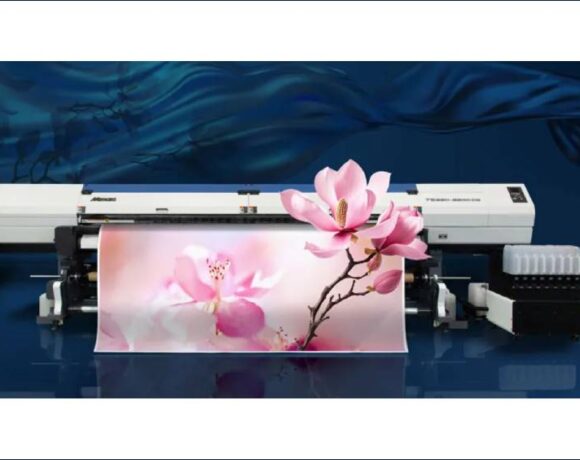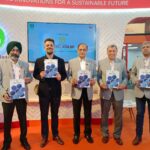Kyocera’s Sustainable Printing Shines At Tokyo Fashion Week

Kyocera Document Solutions Inc., under the leadership of President Hironori Ando, provided the Japanese fashion brand TELMA with fabrics printed using their environmentally friendly inkjet textile printer, FOREARTH, which were showcased at Rakuten Fashion Week TOKYO. On Monday, September 2, TELMA held its first-ever runway-style show in Tokyo, with one-third of the 40 total looks featuring fabric printed by Kyocera’s FOREARTH.
TELMA’s designer, Terumasa Nakajima, renowned for his passion for textiles, emphasized the use of acetate fabric for the show. Acetate, a semi-synthetic material derived from wood pulp, is often preferred for its silk-like luster, drape, and elasticity, commonly used in scarves and skirts. However, traditional dyeing methods posed challenges for acetate due to its heat sensitivity, leading to issues such as uneven coloration and difficulty controlling temperature during the dyeing process. FOREARTH’s pigments, which do not require high-temperature processing, proved ideal for acetate, producing vibrant colors and resolving previous concerns related to color reproduction and uniformity.
This marked Nakajima’s first collection in Tokyo, where he aimed to introduce himself to the audience. With a background from the prestigious Royal Academy of Fine Arts in Antwerp and previous experience at Dries Van Noten, he merged Western and Eastern aesthetics for the collection, showcasing Japanese craftsmanship. Nakajima expressed surprise and admiration at FOREARTH’s ability to print on acetate, not only for its superior coloring but also for maintaining the fabric’s texture.
He further praised FOREARTH for its sustainability, particularly its ability to reduce water usage by 99% compared to conventional methods. The technology allowed the production of 40 unique designs for the show, highlighting its versatility and efficiency across a variety of fabrics. Nakajima also noted that FOREARTH’s environmentally friendly innovations, which combine sustainability with high-quality output, had the potential to revolutionize the apparel industry. He believed that the technology could overcome limitations faced by traditional printing methods and offer new possibilities for fabrics such as silk and polyester, previously considered difficult to print.















